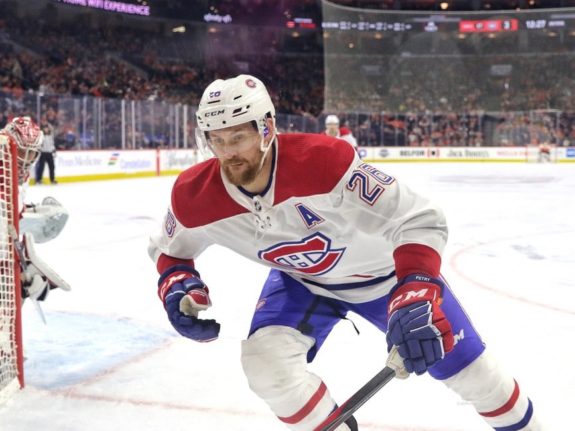With his two game-winning goals that helped the Montreal Canadiens upset the Pittsburgh Penguins in the Qualifying Round of the playoffs, Jeff Petry offers some incredible learning points for any amateur hockey player. He’s able to read the play well and always be a passing option for the puck carrier.

He is also able to release the puck with precision and speed once he gets it. Although he is not typically known for his offensive prowess, these skills can be applied in any style of play.
Joining the Rush
In Game 1 of the Qualifying Round, Petry was the hero in overtime after he wired a shot past Matt Murray. The biggest component of this goal was Petry joining in the rush and adding a second layer of attack. Brendan Gallagher enters the zone wide with the puck, joined by Phillip Danault driving the middle lane and Tomas Tatar reading the play on the other half of the ice. A perfect example of a zone entry is tarnished by the Penguins, breaking up Gallagher’s feed to the middle of the ice.
However, in Pittsburgh’s attempt to break up the initial play, all five black and gold jerseys over pursue the puck in an effort to protect the front of the net. Petry makes a great read to pick up the errant puck as part of the second layer and is in a prime scoring area of the ice. Near the hash marks inside the right faceoff circle, Petry pulls the puck around a sliding defenseman, changing the angle of the shot and getting it to the back of the net.
Finding Open Ice
In Game 3 of the Qualifying Round, Petry broke the tie late in the third period, which proved to be the game-winner the Canadiens needed to take a 2-1 series lead. He’s able to exploit Murray’s poor save selection with a perfect shot that finds an opening just big enough for the puck. Before the shot is taken, the Canadiens maintain puck possession in their offensive zone. They enter a high cycle, moving the puck around the top of the right faceoff circle, to disrupt the Penguins defensive zone setup.
Their effectiveness in this play allows the Canadiens to hold onto the puck and change their forwards without sacrificing offensive zone time. With the forwards filtering up and out of the zone for the change, Petry is able to find open ice on the goal line to the right of the net. His defensive partner, Ben Chiarot, snaps him a pass, and his positioning rewards him with the time and space needed to put the puck over Murray’s shoulder.
Getting Better
Both goals are easy to get excited about; Petry snipes the puck in the Stanley Cup playoffs to give his team the win. There are two key learning points we can absorb from these goals, with the first being how Petry shoots the puck. Petry pulls the puck and gets the first shot through traffic and the goaltender, which is no common feat.
Related: How Much to Players Get Paid in the Playoffs?
Players can practice this type of shot by having their feet facing the net and shoot while changing the angle. In this instance, it would be pulling the puck in towards you to get the shot around an obstacle. The second shot displays incredible accuracy, which players can practice by picking spots in the net to hit and repeatedly hitting them.
The second key learning point is what often gets lost in the highlight reel, which are the reads that Petry makes on both plays that lead to the goals. When on the ice, a player must assess the play and make these decisions in real-time. Joining the rush and finding open ice are often referred to as Hockey IQ. This can be practiced and developed by making decisions within small area games or game-situation drills.

The key is to make these decisions intentionally and also learn how to play after these decisions are made. If the decision is a mistake in an instance similar to these two goals, the player will have to make an adjustment to get back into the play and work to get back on the defensive side of the puck. If the decisions made benefit the player and a goal is scored, then he or she can be a timely goal scorer like Petry.